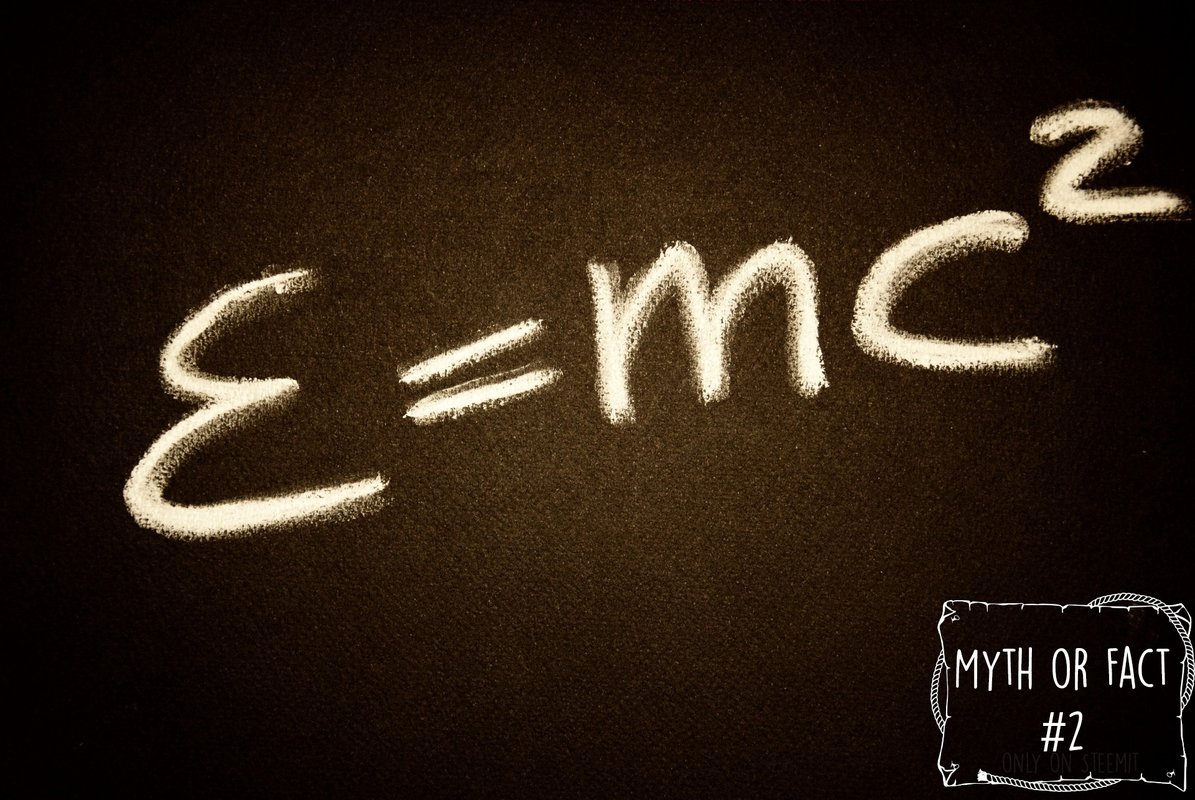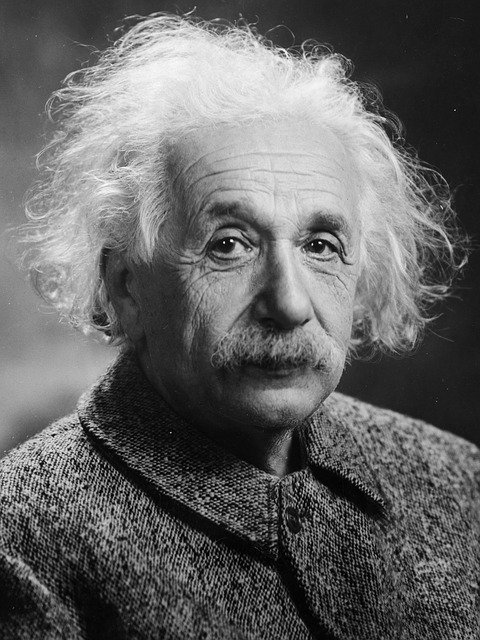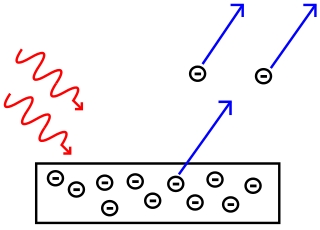
Probably the world's most famous equation: E=mc². Everyone of us heard that formula and some might even know what it says. The man behind is none other than Albert Einstein. Einstein was born in Ulm, a city in Germany on the 14 March of 1879 and later moved to the United States because of the persecution of the Jews. In 1921 he received the Nobel Prize in Physics. Because he is known to the most for his energy-mass equation, many believe he received the Nobel Prize for this formula. But is this true?
We will bring light into this myth and whether it is fact or fiction, we will find out.

Fig.1 Picture of A. Einstein. Credits
Energy equals mass multiplied by the speed of light squared
First, let’s have a look at what E=mc² means. As the title points out it says that energy correlates to mass. Got it, no? Then let's dig deeper! Energy has the SI unit J which stands for Joule. Joule however comprises the basic units kg (kilogram), m (meter) and s (seconds). 1J can be described as 1 (kg*m²)/s².Take care of the right notation because for instance a small m means mass and the upper case M stands for mega (10^6 = 1.000.000). In science you have to be accurate, very accurate. Why do I tell you this? When you extend the equation to its basic units you will see that the left and right side has the same unit. Mass and energy are the same. Mass is nothing more than very densely packed energy. It tells us that one can be transformed into one another.
To give you a little sense how much energy a single gram of mass contain we will do a quick calculation. E=mc²=0.001 kg*(299,792,458 m/s)²= 8.98755179 10^13 m²/s² or 8. 9875517910^13 J or 89,875,517,900,000 J. Huge number right? But what we need is a comparison, maybe TNT? One kiloton of TNT is equivalent to 4.184 * 10^12 J. So, our 1 g of mass would have an equivalent of around 21.48 kT. The first atomic bomb that was tested above ground had an equivalent of around 21 kT and was dropped on the 16th of July 1945. Our 1 g mass has theoretically the devastating power of the first atomic bomb!
To come back to our question, did Albert Einstein receive his Nobel Prize for this formula? No, he didn’t, although he definitely deserved the Nobel Prize much earlier. He received his Nobel Prize in 1921 for another great discovery.
Photoelectric effect
In the same year as he released his paper „Does the Inertia of a Body Depend Upon Its Energy Content?“ in which he introduced e=mc² he published the paper „On a Heuristic Viewpoint Concerning the Production and Transformation of Light“. In this work he describes the phenomena that electrons are solved from the surface of metals when irradiated with light. In particular he showed that light consists of photons with the energy h*f each. H stands for the Planck constant and f for the frequency.

Fig.2 Illustration of the photoelectric effect. Credits
As already said Einstein did deserve the Nobel Prize much earlier, however there was a problem with the committee. Most of the members where experimental physicists while Albert Einstein was a theoretical physicists. The committee had problems to understand and accept his work about „Does the Inertia of a Body Depend Upon Its Energy Content“.
Luckily they did have more in favor with his more experimental work of the photoelectric effect. The next time someone tells you Einstein receives his Nobel Prize for E=cm² you will tell him:

I hope you enjoyed this episode of Myth or Fact. The next one will follow tomorrow.
-Tim
Source of the scientific papers:
Does the Inertia of a Body Depend Upon Its Energy
On a Heuristic Viewpoint Concerning the Production and Transformation of Light
